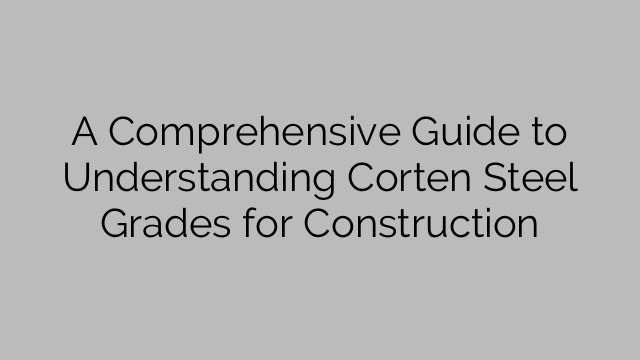Understanding the different grades of Corten steel is essential before making any decision regarding its application in construction. Each grade offers specific attributes that make it suitable for various environments and applications. Here is a comprehensive guide to understanding Corten steel grades for construction.
1. Corten A: This is the most common type of Corten steel available in the market. It contains a minimum of 0.20 percent copper, which gives it improved resistance to atmospheric corrosion compared to other grades. Corten A is suitable for outdoor applications, such as façades and bridges, where it can develop a protective patina without compromising its structural integrity.
2. Corten B: This grade contains a higher level of copper than Corten A, ranging between 0.40 to 0.65 percent. It offers enhanced corrosion resistance, making it ideal for applications exposed to harsh weather conditions. Corten B is commonly used in building facades, roof claddings, and outdoor sculptures.
3. Corten Steel S355J2W: This grade is characterized by its high tensile strength and improved corrosion resistance. It contains chromium, nickel, and copper, which contribute to its weathering properties. Corten Steel S355J2W is often used in marine environments, coastal areas, and outdoor structures that require long-term durability.
4. Corten Steel S355JOW: Similar to S355J2W, this grade also offers superior atmospheric corrosion resistance. It has a higher phosphorus content, which enhances its weathering capabilities. Corten Steel S355JOW is widely used in applications where exposure to pollutants, such as sulfur dioxide or chlorides, is expected.
5. Corten Steel S355J2WP: This grade is specifically designed to resist atmospheric corrosion in moderately corrosive environments. It contains a higher percentage of phosphorus, copper, chromium, and nickel than other Corten grades. Corten Steel S355J2WP is commonly used in structures exposed to urban or industrial atmospheres, such as bridges and power plants.
When choosing the most suitable Corten steel grade for your construction project, it is essential to consider factors such as the expected weather conditions, level of exposure to corrosive elements, and required strength. Consulting with a structural engineer or steel supplier can help determine the most appropriate grade for your specific application.
It is also important to note that the rusty appearance of Corten steel can result in runoff of iron oxide onto adjacent materials such as concrete. To avoid staining, proper detailing and installation methods should be followed, such as using stainless steel or other compatible materials for fasteners and avoiding direct contact between Corten steel and porous surfaces.
In conclusion, Corten steel grades offer an excellent combination of aesthetic appeal and superior durability. Understanding the different grades available and their specific attributes is crucial when deciding on the appropriate grade for a construction project. By considering environmental factors and consulting with experts, you can ensure the long-term performance and visual appeal of structures constructed with Corten steel.
[ad_2]

